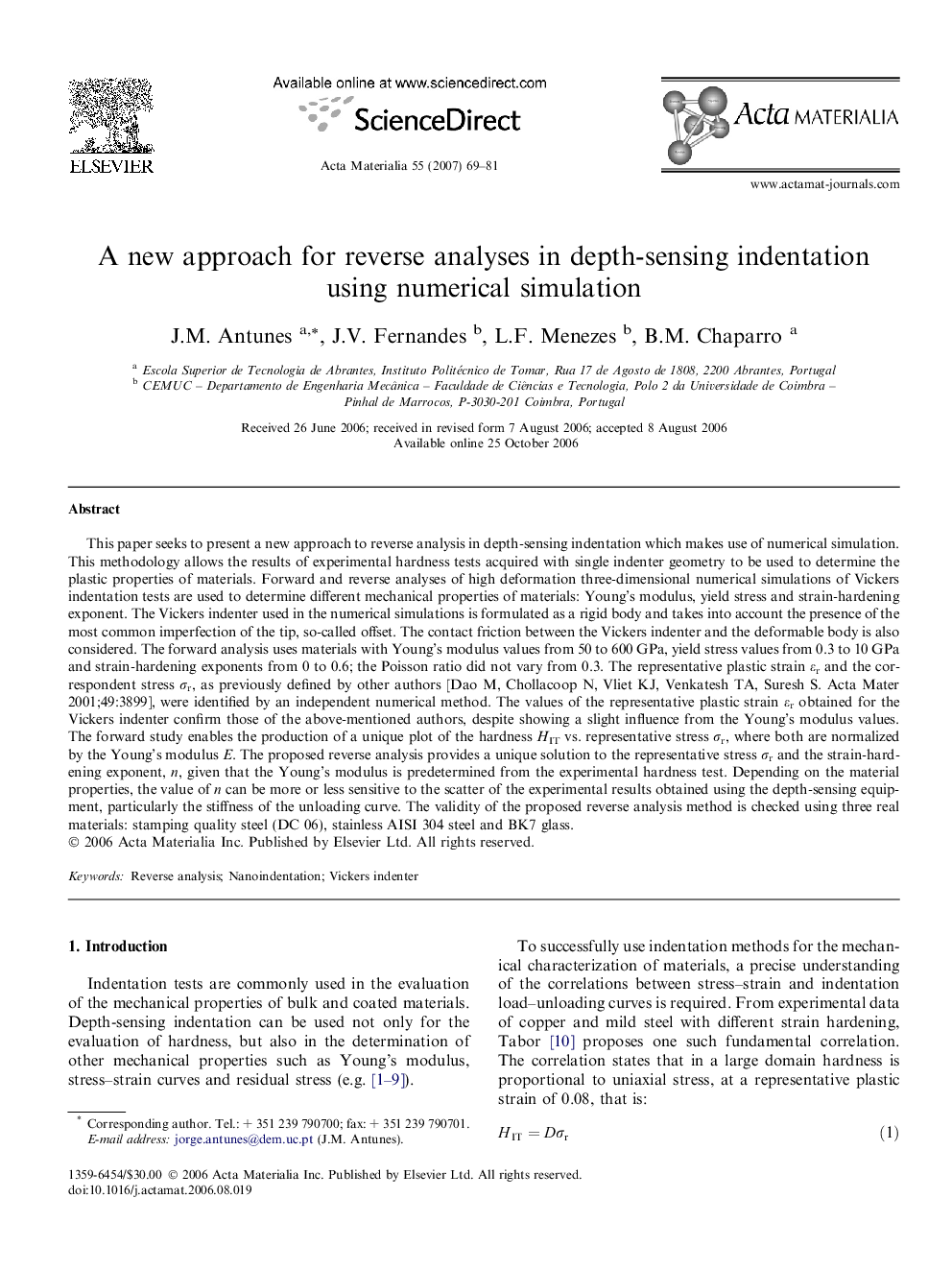| کد مقاله | کد نشریه | سال انتشار | مقاله انگلیسی | نسخه تمام متن |
|---|---|---|---|---|
| 1449890 | 988717 | 2007 | 13 صفحه PDF | دانلود رایگان |

This paper seeks to present a new approach to reverse analysis in depth-sensing indentation which makes use of numerical simulation. This methodology allows the results of experimental hardness tests acquired with single indenter geometry to be used to determine the plastic properties of materials. Forward and reverse analyses of high deformation three-dimensional numerical simulations of Vickers indentation tests are used to determine different mechanical properties of materials: Young’s modulus, yield stress and strain-hardening exponent. The Vickers indenter used in the numerical simulations is formulated as a rigid body and takes into account the presence of the most common imperfection of the tip, so-called offset. The contact friction between the Vickers indenter and the deformable body is also considered. The forward analysis uses materials with Young’s modulus values from 50 to 600 GPa, yield stress values from 0.3 to 10 GPa and strain-hardening exponents from 0 to 0.6; the Poisson ratio did not vary from 0.3. The representative plastic strain εr and the correspondent stress σr, as previously defined by other authors [Dao M, Chollacoop N, Vliet KJ, Venkatesh TA, Suresh S. Acta Mater 2001;49:3899], were identified by an independent numerical method. The values of the representative plastic strain εr obtained for the Vickers indenter confirm those of the above-mentioned authors, despite showing a slight influence from the Young’s modulus values. The forward study enables the production of a unique plot of the hardness HIT vs. representative stress σr, where both are normalized by the Young’s modulus E. The proposed reverse analysis provides a unique solution to the representative stress σr and the strain-hardening exponent, n, given that the Young’s modulus is predetermined from the experimental hardness test. Depending on the material properties, the value of n can be more or less sensitive to the scatter of the experimental results obtained using the depth-sensing equipment, particularly the stiffness of the unloading curve. The validity of the proposed reverse analysis method is checked using three real materials: stamping quality steel (DC 06), stainless AISI 304 steel and BK7 glass.
Journal: Acta Materialia - Volume 55, Issue 1, January 2007, Pages 69–81